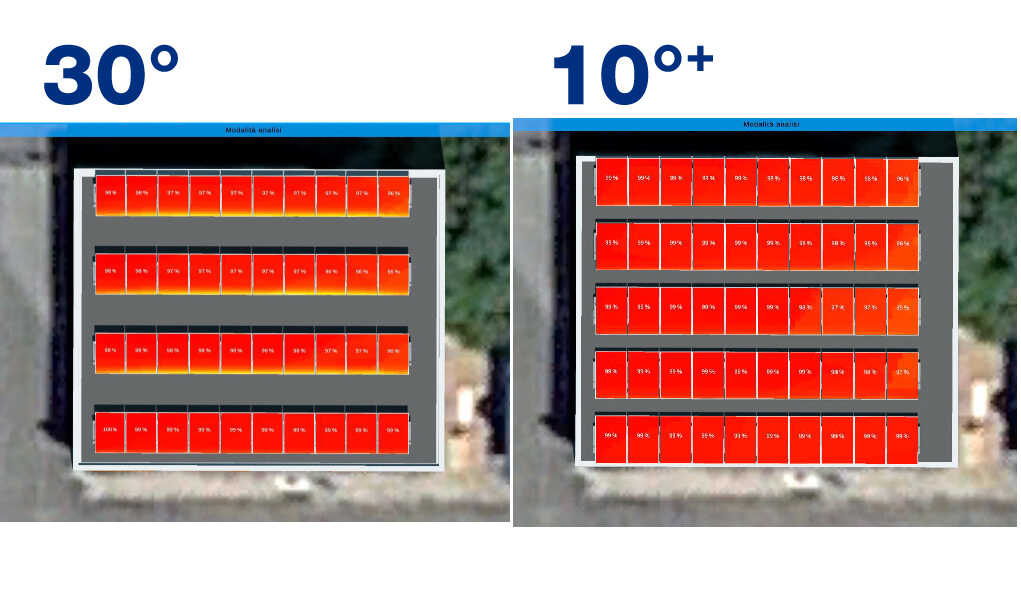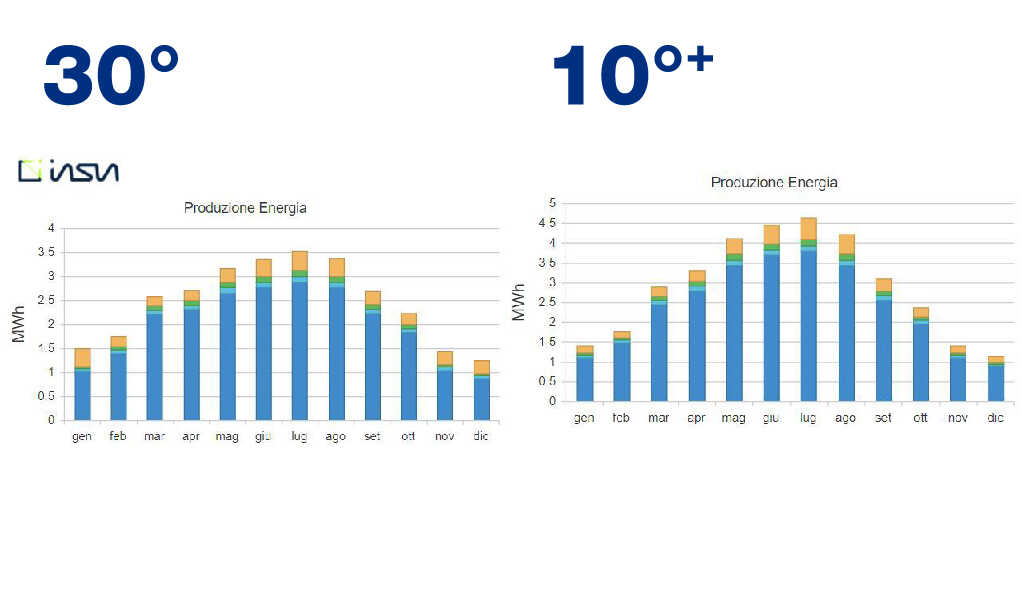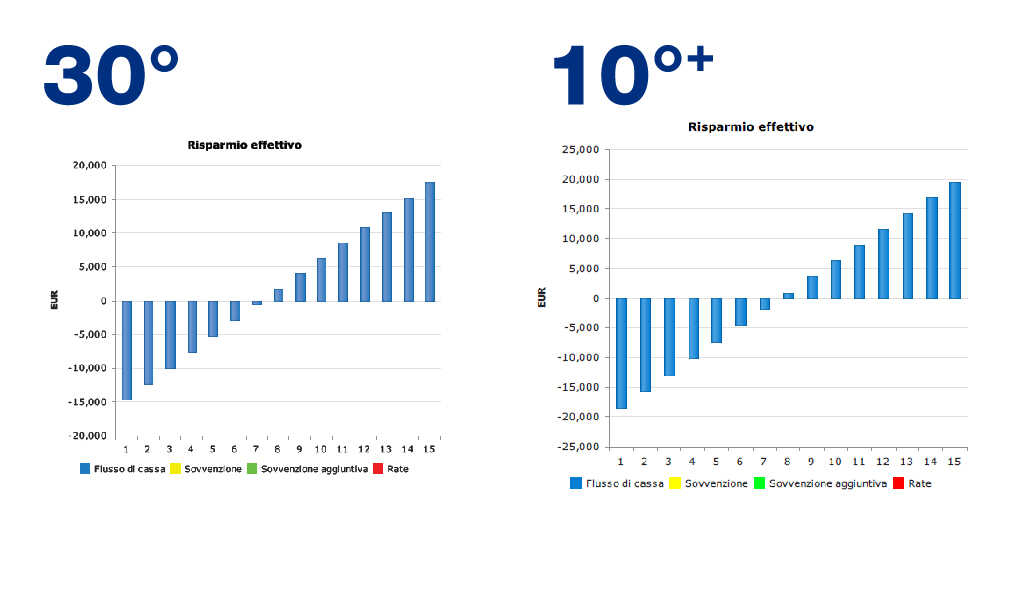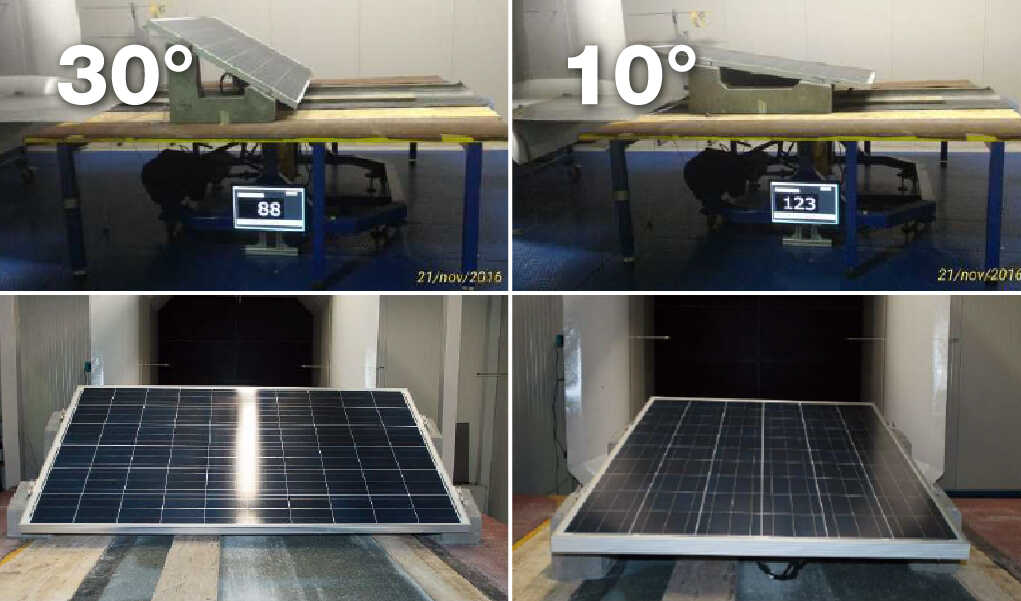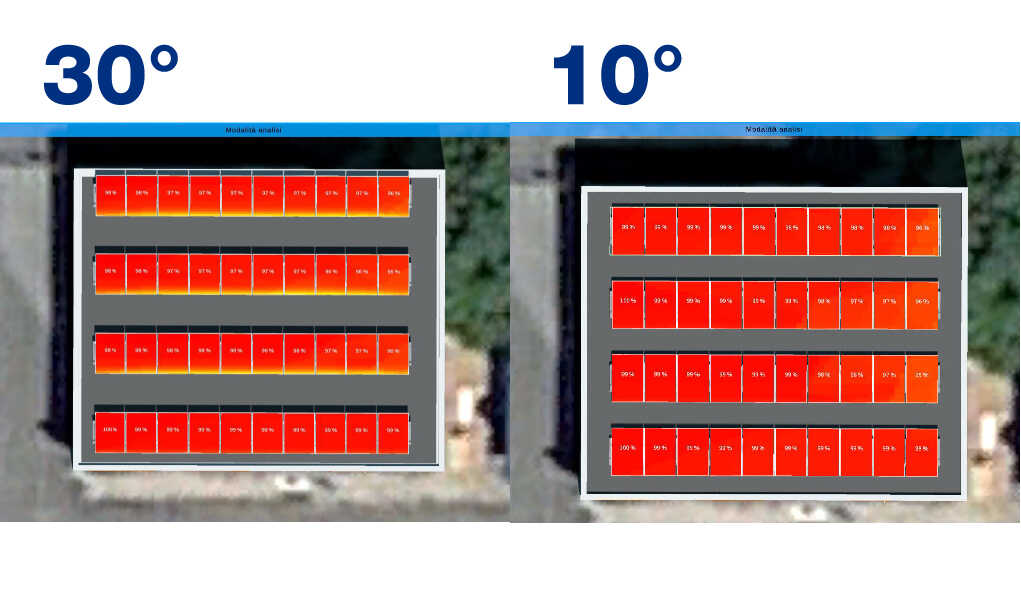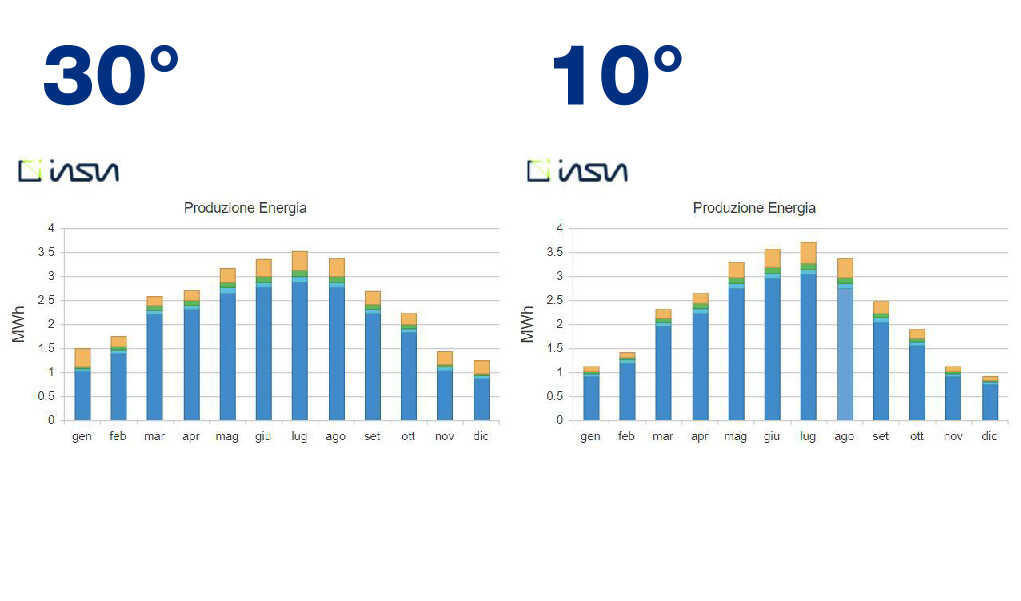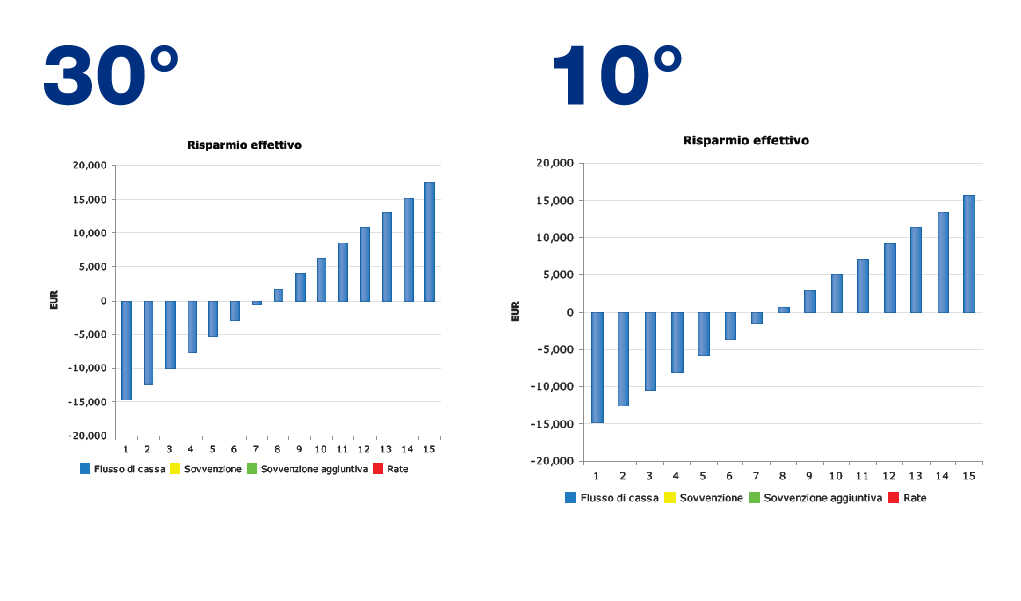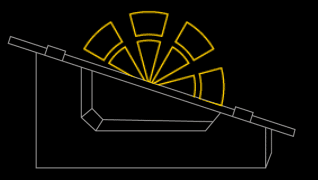Inclination: a perfect 10°
What is the ideal inclination for a photovoltaic system? And does an inclination greater than 10° really mean increased production of renewable energy? Let’s find out together – with help from our Technical Department.
First: the design
There are two main objectives to keep in mind when setting up a PV system: it must be productive and durable over time. If it also looks good, so much the better, of course!
The first requirement, production, is most important during the design phase, when the optimum inclination is identified. Sun Ballast, with its highly qualified technical department, offers careful and clear consideration of the topic, with special focus on the cost-benefit ratios of different inclinations.
When switching to solar energy, issues that must be considered include environmental and geographical factors (such as latitude), inclination and orientation, and technical factors relating to the product itself such as the type of PV modules, inverters or accumulators used.
Essentially, each design must be tailor-made, which allows for return on investment in a time frame of 5-10 years.
However, there is often a belief that a photovoltaic plant with a greater inclination means greater productivity and thus a faster return on investment.
But is this really the case?
In reality, the greatest benefits come from inclinations up to 10°.
The wide variety of possible inclinations often causes confusion and uncertainty about the best way to achieve the highest standards of solidity and yield of a PV system.
To clarify, let’s list the advantages of an inclination less than 10°:
- Increased wind resistance, tested by laboratory experiments in which tolerance to a wind speed of 123 km/h was achieved and recorded.
- Permanent and limited loads on rooftops. A lower inclination leads to less weight on the roof surface. Higher inclinations require additional weights to ensure the system remains solid and strong. This is also a factor to be taken into account regarding seismic inspections and regulations.
- Optimization of space kW/sqm due to closer panel placement, as there is no fixed area of shade to be avoided throughout the day or during certain months of the year.
- Impact on the landscape and respect for landscape constraints.
10° or 30°? So what is the best inclination for PV modules on flat roofs?
To prove the point, our Technical Office compared the different inclinations taken into consideration and looked at three factors: cost, productivity, and yield.
The calculations were done using InSun (design software that allows you to arrange the structure, modules, cables, and inverters).
We simulated two identical photovoltaic systems – with the same number of modules and ballasts – on the flat roof of a building located in central Italy, one using a 10° tilt and one with a 30° tilt. The results showed that the actual difference in savings as well as in the 15-year return on investment was quite minimal, and not enough to justify the higher cost-benefit ratio of an inclination greater than 10°.
Among the many advantages of a 10° inclination is the fact that this configuration makes it unnecessary to leave large amounts of space between one panel and the next (usually left free for any shadows.) This means more available space and the possibility of using more photovoltaic modules: the same roof can accommodate 10 additional panels, leading to much greater yield in both productive and economic terms, compared to a plant with a 30° inclination.
Finally, a 10° inclination also means saving the cost of the additional weights that are necessary for higher inclinations, to increase wind resistance and reduce the risk of panels tipping over during bad weather. In fact, for 30° inclinations, wind resistance up to only 88 km/h was recorded in wind tunnel analyses – a full 35 km/h less than that of plants at 10°.
Trust the data and choose the best solution together with Sun Ballast
At the end of this in-depth study, we can confidently say that inclination is a critically important aspect that should be carefully considered when deciding to install a photovoltaic system. It is crucial to not let yourself be influenced by outdated beliefs, according to which higher inclinations automatically mean more efficient PV systems.
We have shown that 15 years after the setup of plants that are identical except for their different inclinations, the variation in yield is minimal. And not only that: choosing a lower inclination translates into reduced costs, the possibility of installing a considerably higher number of panels, and a faster return on investment.
Sun Ballast, with its Technical Department, offers a completely free consultation service at the quotation stage. This support is offered on a case-by-case basis to help clients and/or designers identify the best choice for them.
With data in hand, confident in Sun Ballast’s decades of experience.


